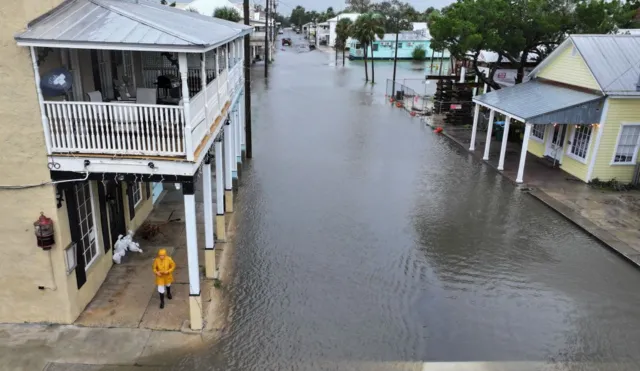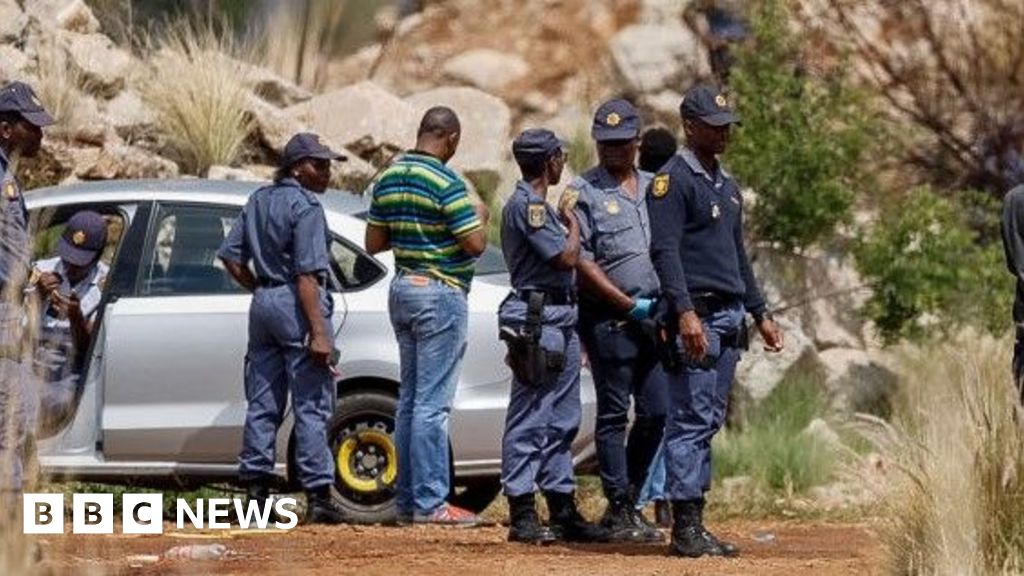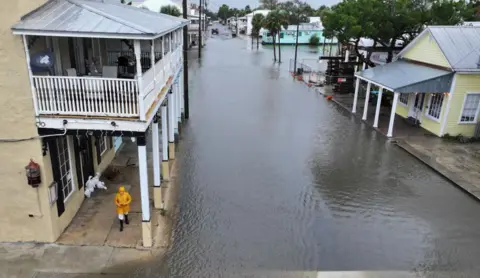 Getty Images
Getty ImagesHurricane Debby has made landfall at the Big Bend region of Florida’s Gulf Coast, with fears of storm surges and catastrophic flooding.
The weather system strengthened into a Category One hurricane late on Sunday and came ashore near Steinhatchee on Monday morning, said the National Hurricane Center (NHC).
It is now forecast to move slowly across the state, packing 80mph winds and dumping as much as 30in (76cm) of rain as it moves north.
The fourth named storm of the season will also soak Georgia and South Carolina in the days ahead.
The slow-moving nature of the storm could mean historic amounts of rainfall, said Jamie Rhome, the deputy director of the hurricane center.
“You’re talking about catastrophic flooding.”
Already the storm’s strong winds are impacting Floridians – some 260,000 homes and businesses are without power in the state, according to PowerOutage.com.
Debby is expected to slow down dramatically on its journey across Florida as the steering flow of winds high in the atmosphere essentially collapses.
This will leave the hurricane drifting slowly out over the Atlantic as a tropical storm where it will churn over the ocean, relentlessly throwing bands of rain into south-east Georgia and the Carolinas on Tuesday and Wednesday, before moving inland over South Carolina on Thursday.
Historic rainfall is likely to lead to areas of catastrophic flooding, exacerbated by a storm surge along the coast which could leave water trapped in river systems, unable to drain into the ocean.
Ahead of the storm making landfall, Florida Governor Ron DeSantis declared a state of emergency for 61 of Florida’s 67 counties. He also said utility crews from in and out of state are ready to help restore power after the storm.
Mr DeSantis is not the only one preparing, residents across the state are readying for the worst.
Spyridon Aibejeris told USA Today repairs on his Keaton Beach home had just wrapped up two weeks ago from Hurricane Idalia, a category three storm that made landfall last summer.
“Man, I’ve done this so many times,” Mr Aibejeris said. “You just go back and see what you’ve got to do.”
“I hope I don’t have to go back to that again,” he added.
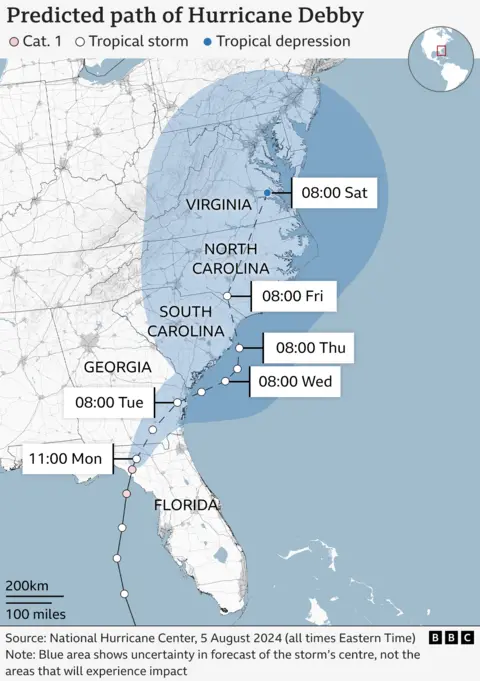
Forecasters predicted this hurricane season, which runs from 1 June to 30 November, will be a busy one.
The National Oceanic and Atmospheric Administration (NOAA) issued its most startling warning to date about the current season. Forecasters said there could be up to 25 named storms in 2024.
Between eight and 13 of those storms could develop into hurricanes, the NOAA said.
Hurricane Betty marks the fourth named storm of the year after Tropical Storm Alberto, Hurricane Beryl and Tropical Storm Chris.
It is thought that climate change may be making slow-moving hurricanes like this more likely.
As the world heats unevenly, this causes changes in the atmospheric circulations that steer storms across the planet.
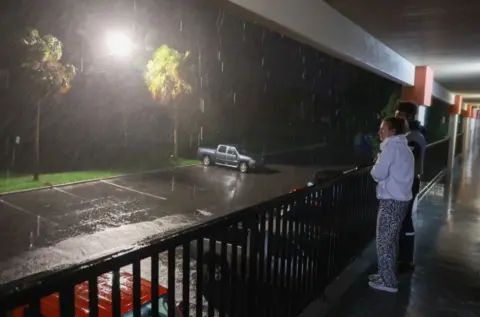 Getty Images
Getty Images
